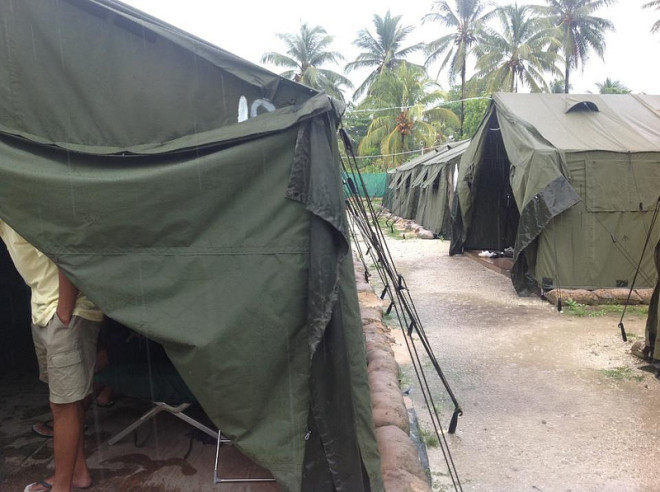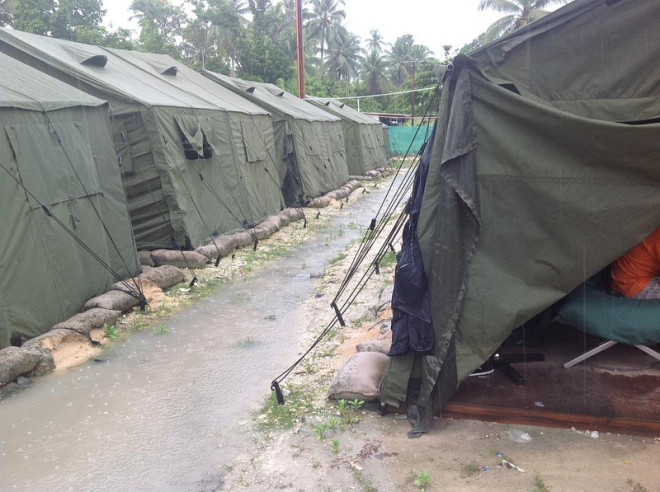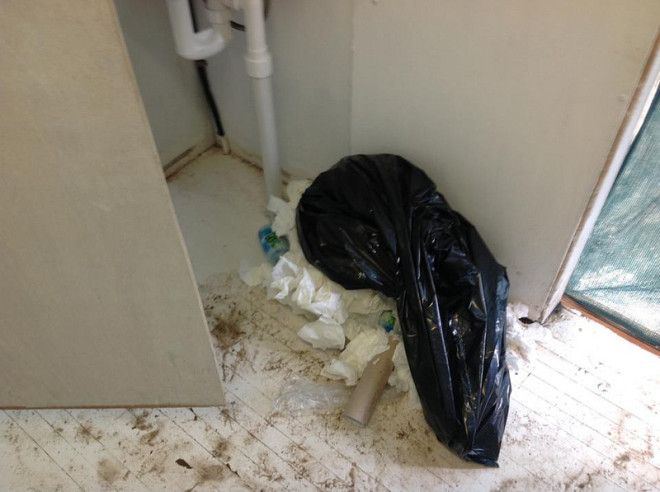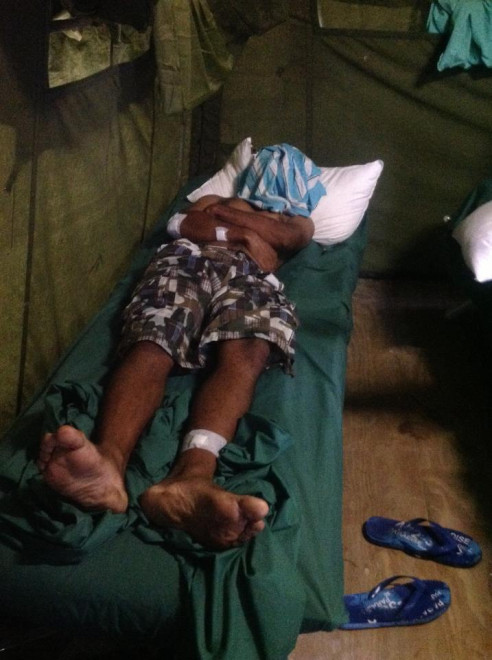Junk Explained: Offshore Detention, Asylum Seekers And Manus Island
Kevin Rudd announced today that from now on asylum seekers arriving by boat will never be settled in Australia. Junkee is republishing this piece from May of this year.
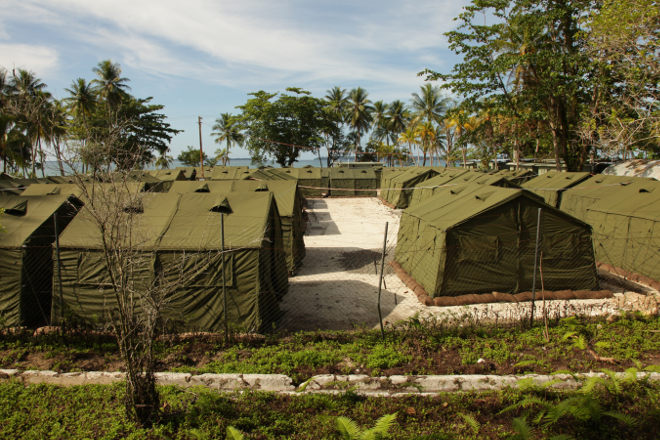
[UPDATE JULY 19, 5.15pm]
Prime Minister Kevin Rudd announced today the immigration policy Labor will be taking to the election. The new legislation means that from now on asylum seekers arriving by boat will never be settled in Australia, regardless of whether or not these people are found to be genuine refugees. Instead, asylum seekers will be resettled in Papua New Guinea after being processed at the Manus Island facility, which is to be expanded to accommodate 3000 people. This is a 1500% expansion on the already controversial facility.
As a guide to the issues surrounding refugee processing in Manus Island, Junkee is republishing this piece from May of this year.
The Federal Government voted in May to remove the mainland from Australia’s migration zone. This is the latest in a series of increasingly complex and confounding moves on the government’s part regarding asylum seekers. With the amount of media chatter around the issue it’s hard to distinguish the signal from the noise. This isn’t helped by our politicians, who not only restrict media access to the detention facilities, but will often obfuscate the situation for their own benefit.
This article is intended as a guide for people who wish to become informed about the conditions asylum seekers face in Australian detention centres, and the consequences of those conditions. It’s recommended that, as you read this article, you follow along with your cursor, clicking on any phrase that surprises you.
DETENTION CENTRES:
Detention centres are used by the government as a deterrent against the employment of people smugglers, who profit from bringing people into Australia without the correct documentation. But the deterrent isn’t working, and it’s causing significant harm to some of the most vulnerable people in the world.
The situation is likely to worsen under an Abbott-led government, especially considering the regularity with which he wrongly classifies asylum seekers as ‘illegal’, as well as coalition plans to use unmanned aerial drones as an integral part of their immigration policy.
The detention of asylum seekers is incredibly costly to the Australian taxpayer. With over 20,000 people currently in detention or on bridging visas, the government is set to spend $8.1 billion on asylum seekers in the next four years.
An article run this week in Time Magazine labelled the policy ruinously expensive, criticising Gillard for reversing her position after once declaring the policy “costly, unsustainable and wrong as a matter of principle.”
MAINLAND EXCLUSION FROM THE MIGRATION ZONE:
Parliament’s decision to excise the mainland from the migration zone this week now means that asylum seekers who manage to land on mainland Australia can still be sent to offshore processing centers on Nauru or Manus Island. The government are not allowing Australia’s Human Rights Commissioner and members of the Australian media to access the offshore detention facilities.
So we’re forced to examine what we know already about the facilities.
OFFSHORE DETENTION:
This is a photo you may not have seen before.
The photo was taken by Andrew Meares for Fairfax in August last year, and shows the House of Representatives passing an amendment reinstating the offshore processing of asylum seekers. The only dissenters are Greens MP Adam Bandt and Independent Andrew Wilkie.
Papua New Guinea’s Manus Island was once again at the center of the asylum seeker debate this February, after Senator Sarah Hanson-Young — the Greens’ immigration spokespoerson — released photos and a damning report exposing conditions at the detention center. Some of these photos are below.
Although Hanson-Young’s complaints were backed up, the move led to her being attacked by the Gillard government.
This recent flare-up has followed a similar debate in 2011, when The Medical Journal of Australia found over a thousand incidents of threatened or enacted self-harm in detention centers in the 2010-11 financial year, and published an editorial condemning prolonged detention.
Various inquiries have found alarming levels of suicidal ideation, Post-Traumatic Stress Disorder, self-harm, bedwetting, nightmares and hopelessness among detainees, which can persist years after the detainees are released.
Prolonged detention has been proven to be detrimental to the mental health of detained children again — and again — and again.
And yet our Government persists.
Our Government is institutionalising the infliction of mental illness.
We are letting them do this to children.
MANUS ISLAND FACILITY:
The UN Refugee Agency toured the Manus Island detention centre in January of this year, describing the facility as ‘harsh’ and ‘very uncomfortable’. Families stay in 3×3 meter compounds not dissimilar to shipping containers, and must often sleep outside to escape the intense heat and humidity. Many of the compounds do not contain doors, making privacy a major concern of many housed at the facility.
At the time of the visit there were 34 children being housed at the facility. Concerns have been raised regarding children showing signs of trauma from both their boat journey and their time in the facility.
Medical conditions are also of concern, with an up-to three day wait to see a professional, and no way for detainees to directly access the clinic. There have been multiple reports of hunger strikes as well as self harm at the facility.
The latest restrictions from the Federal Government makes it unlikely that we’ll see further meaningful reports from the facility for the time being.
WE’RE RESPONSIBLE:
When our national anthem is played before sporting events and official functions, a shiver of guilt should run through the spines of every one of us: “For those who come across the seas we’ve boundless plains to share.”
Every single day the most vulnerable people in the world are treated in a cruel, inhumane way, and it’s happening in our name. It’s the shame of our nation and the sickening legacy of our generation. It’s all too easy to imagine being reduced to guilty silence when, in some not too distant future, we are asked by our descendants how we could have allowed this to persist for so long. I fear we won’t have a good enough answer.
–
James Colley is a writer/comedian from Western Sydney, in his final year of a physics degree. He blogs at fineanimalgorilla.com and tweets at @JamColley.
Feature image via Wikipedia.
